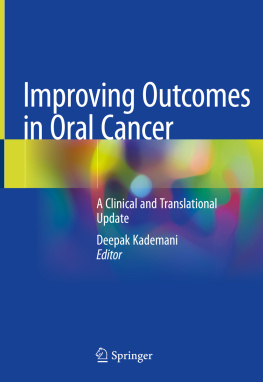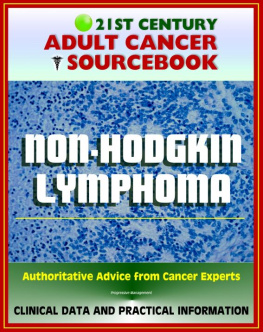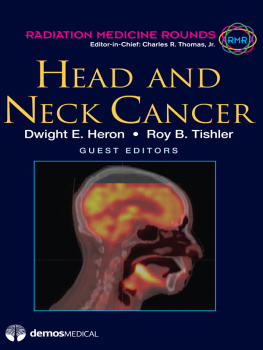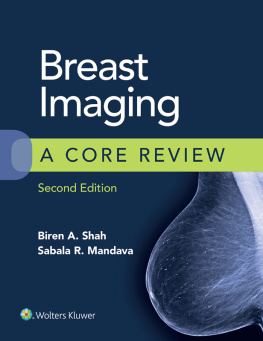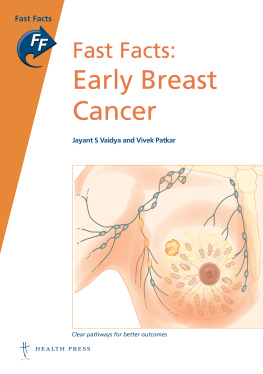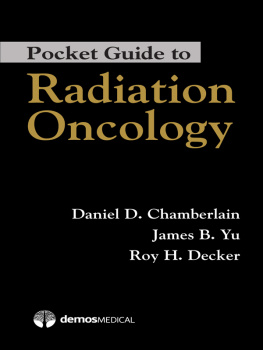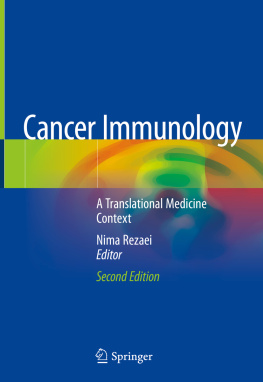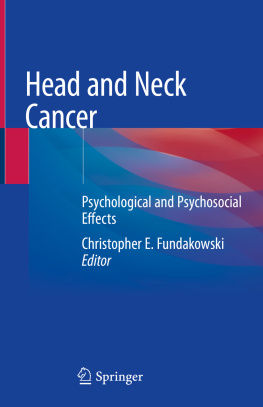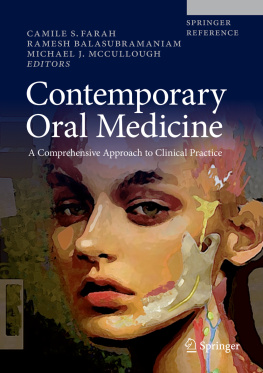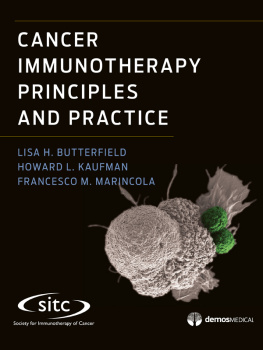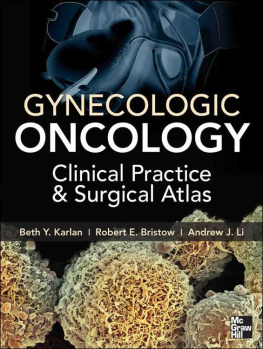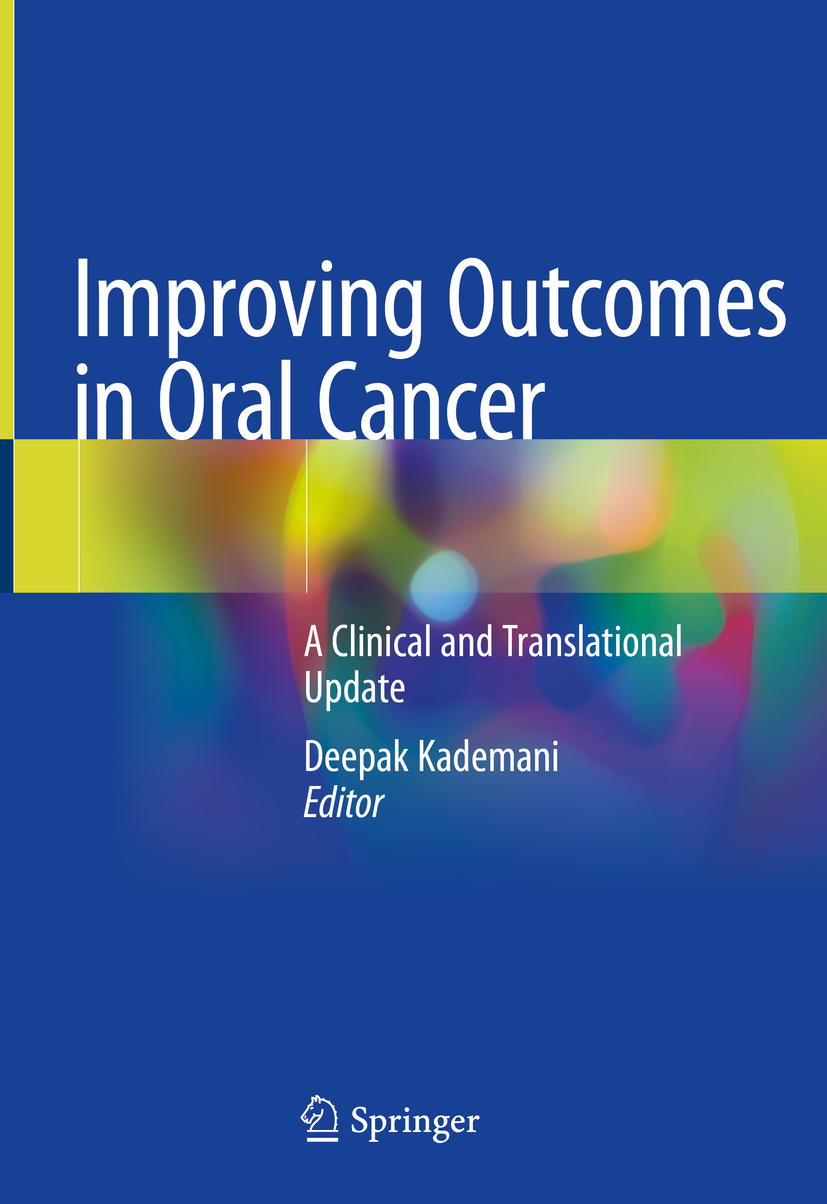Improving Outcomes in Oral Cancer
A Clinical and Translational Update
Editor
Deepak Kademani
Department of Oral and Maxillofacial Surgery, North Memorial Medical Center, Minneapolis, MN, USA
ISBN 978-3-030-30093-7 e-ISBN 978-3-030-30094-4
https://doi.org/10.1007/978-3-030-30094-4
Springer Nature Switzerland AG 2020
This work is subject to copyright. All rights are reserved by the Publisher, whether the whole or part of the material is concerned, specifically the rights of translation, reprinting, reuse of illustrations, recitation, broadcasting, reproduction on microfilms or in any other physical way, and transmission or information storage and retrieval, electronic adaptation, computer software, or by similar or dissimilar methodology now known or hereafter developed.
The use of general descriptive names, registered names, trademarks, service marks, etc. in this publication does not imply, even in the absence of a specific statement, that such names are exempt from the relevant protective laws and regulations and therefore free for general use.
The publisher, the authors, and the editors are safe to assume that the advice and information in this book are believed to be true and accurate at the date of publication. Neither the publisher nor the authors or the editors give a warranty, expressed or implied, with respect to the material contained herein or for any errors or omissions that may have been made. The publisher remains neutral with regard to jurisdictional claims in published maps and institutional affiliations.
This Springer imprint is published by the registered company Springer Nature Switzerland AG
The registered company address is: Gewerbestrasse 11, 6330 Cham, Switzerland
To my patients who have given me the privilege to care for them and taught me so much about the human spirit
Contents
Kenneth Wan and Deepak Kademani
Jeffrey Y. Tsai and Jasjit K. Dillon
James Murphy and Mohammed Qaisi
Paul Covello and D. David Kim
Justine Moe , Andrew Baker and Brent Ward
Eric R. Carlson and J. Michael McCoy
Anthony Morlandt and Hope Amm
Michael Awadallah , Kurt Nisi and Ketan J. Patel
Arielle Elkrief , Nicholas Makhoul and Nathaniel Bouganim
Marcus A. Couey , Rom S. Leidner , Simon W. Young and R. Bryan Bell
Joshua E. Lubek and Michael Nagai
J. Collin , B. Turner and R. Fernandes
Roderick Y. Kim , Jason N. Burkes and Fayette C. Williams
1. Oral Epithelial Dysplasia
1.1 Introduction
In general histopathology terms, dysplasia is a disordered growth that encompasses an abnormality in the maturation of cells within tissues and the development of cytological atypia within cells. When dysplasia occurs in the epithelium of the oral cavity, the WHO have termed it oral epithelial dysplasia (OED), defining it as a precancerous lesion of stratified squamous epithelium, characterized by cellular atypia and loss of normal maturation and stratification short of carcinoma in situ. It is a histologically proven oral premalignant lesion that is associated with a significant higher risk of malignant transformation. An OED may be part of a clinically apparent lesion, such as leukoplakia, eythroplakia, erytholeukoplakia, lichen planus and submucosal fibrosis, actinic chelitis, and chronic hyperplastic candidiasis. These lesions are termed oral potentially malignant disorders (OPMD) by the 2005 WHO workshop and are referred to a variety of clinical lesions, conditions, or systemic disorders, which result in an increased risk of cancer development in the oral cavity compared to normal mucosa in a healthy patient. Recently, the term, potentially premalignant oral epithelial lesions (PPOEL), has been described in the literature to replace OPMD. For a lesion to be described as an oral epithelial dysplasia, there must be a biopsied and histopathologically reported foci of dysplasia.
1.2 Grading and Classification of OED
OED is a condition comprising of a spectrum of tissue changes, with several grading systems established to classify into arbitrary levels of severity, hence diagnosis is extremely subjective []. These are generally based on the histopathological classification of premalignant lesions of other mucosal sites, which frequently develop SCC.
For example, squamous intraepithelial neoplasia (SIN) is an oral adaptation of a system used for classifying precursor lesions of the uterine cervix and have been used for grading OED in the older literature [].
In the Ljubljana grading system, lesions are categorized into simple hyperplasia, basal/parabasal hyperplasia, atypical hyperplasia, or carcinoma in situ. It is an alternative system based on another anatomical site but adapted for the oral cavity and oropharynx [].
Another grading systems include the Smith and Pindborg, which utilizes 13 histological features that are standardized by a set of photographs. After comparing with the photographic standard, the feature is graded as none, slight, or marked and given a score. The scores are added to achieve the epithelial atypia index (EAI) score (maximum possible is 75), and depending upon the EAI, the dysplasia is graded as no dysplasia, mild, moderate, or severe.
Currently, the 2005 WHO Classification is most widely used for classification of tissue dysplasia. A range of cellular and architectural changes in the tissue is assessed and classified into a specific grade of dysplasia (Tables ).
Table 1.1
List of architectural and cytological changes associated with oral epithelia dysplasia, 2005 WHO Classification
Architecture | Cytology |
|---|
Irregular epithelial stratification | Abnormal variation in nuclear size (anisonucleosis) |
Loss of polarity of basal cells | Abnormal variation in nuclear shape (nuclear pleomorphism) |
Drop-shaped rete ridges | Abnormal variation in cell size (anisocytosis) |
Increased number of mitotic figures | Abnormal variation in cell shape (cellular pleomorphism) |
Abnormal superficial mitoses | Increased nuclear-cytoplasmic ratio |
Dyskeratosis |

